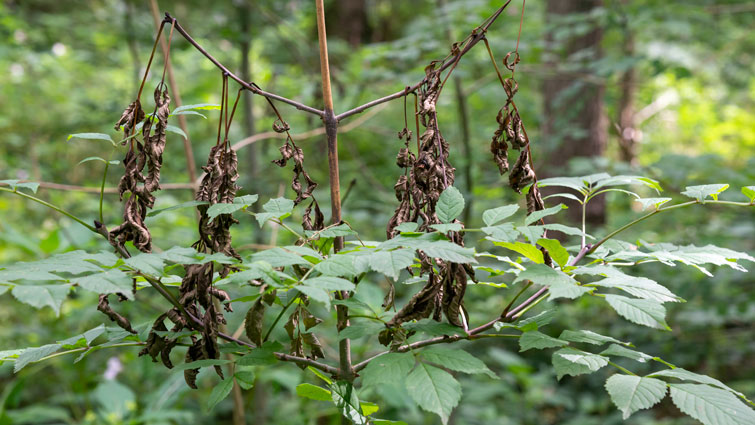Dangers posed by Ash Dieback Disease
Published: Thursday 10 October 2024

Councillors have been told of the risk posed to trees across South Lanarkshire by Ash Dieback Disease.
The disease is the most significant to affect broadleaved trees in the UK since Dutch Elm Disease gained prominence in the 1960s.
It has spread across South Lanarkshire, with only a small fraction of trees proving resistant.
A significant number of ash trees across the area will have to be removed over the next 20 years. Where possible and where conditions allow, new trees will be replanted.
It is estimated that between 50% and 75% of ash trees on land the council manages or owns could need replaced.
Chair of the council’s Community and Enterprise Resources Committee, Councillor Robert Brown, said: “Ash Dieback Disease is a huge threat to our environment but, in addition, a significant number of ash trees grow alongside roads and will need to be removed before they reach the stage of being a hazard.
“If not effectively managed, the loss of ash trees through this pervasive disease has the clear potential to lead to long lasting changes in our landscape, tree populations and canopy cover and the loss of ecosystem services and may potentially increase effects such as flooding and cause a reduction in carbon lockup.
“As a council we have a duty to take reasonable care to ensure that falling branches or trees do not pose a danger to our residents.
“We have developed an Ash Dieback Disease Action Plan to help us to tackle this issue head on. A key element is replacing the lost ash trees with appropriate native tree species which will protect and enhance the landscape and ecosystem.”
Work has already been carried out to assess the ash trees the council is responsible for, and to put them into categories depending on how healthy the tree is.
A full report was tabled at the Community and Enterprise Resources Committee, and the action plan can be viewed on the council’s website.
20 December 2024
Pupils help with lunchtime litter clean up
19 December 2024
Stay safe this Christmas
19 December 2024
Provost Christmas Message 2024
19 December 2024
Strong support remains for council’s leisure centre plans
18 December 2024
Care home’s anniversary keeps it in the family
18 December 2024
Noisy neighbours over the festive period
18 December 2024
School’s reading podcast scoops top prize
17 December 2024
Celebrating two decades of caring
16 December 2024
Let’s not make Christmas a wasteful time
13 December 2024
Partnership approach to reduce inequalities













